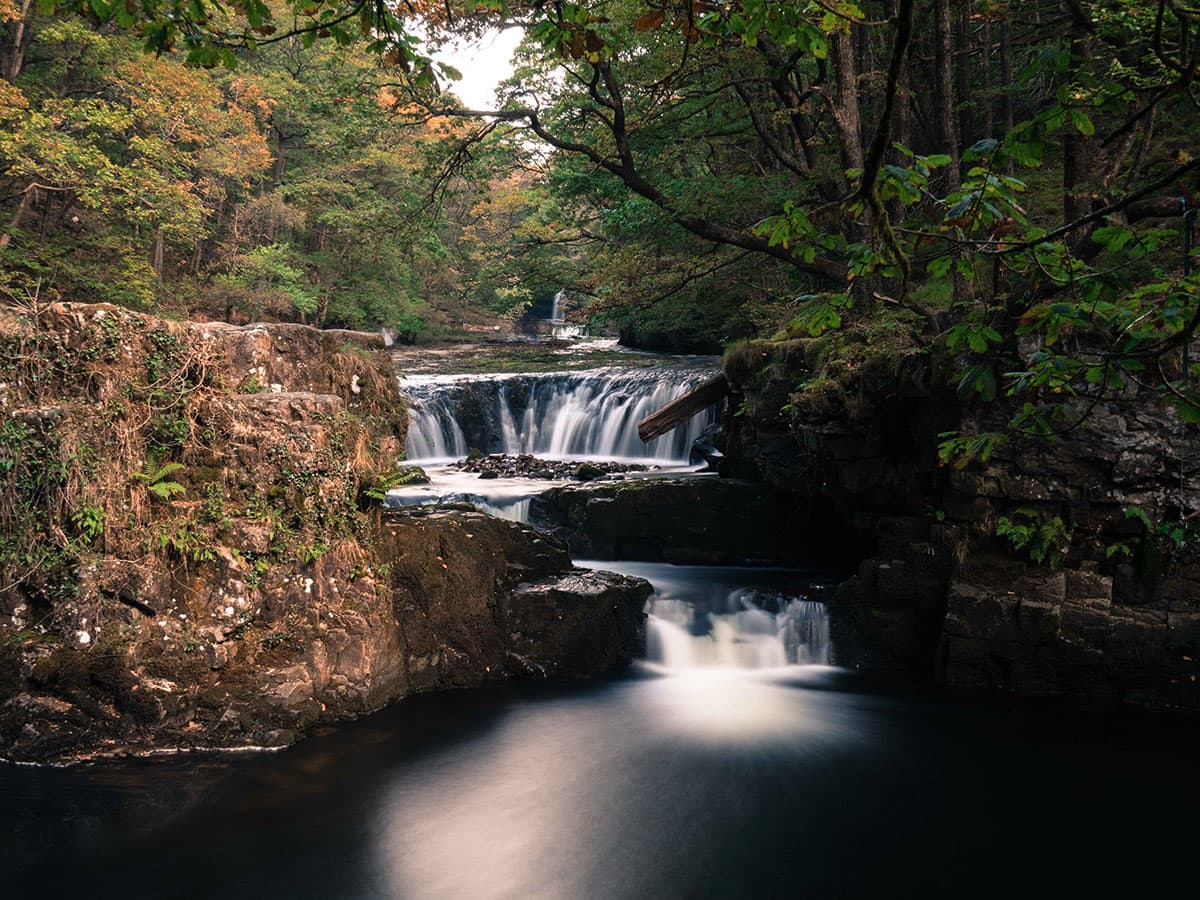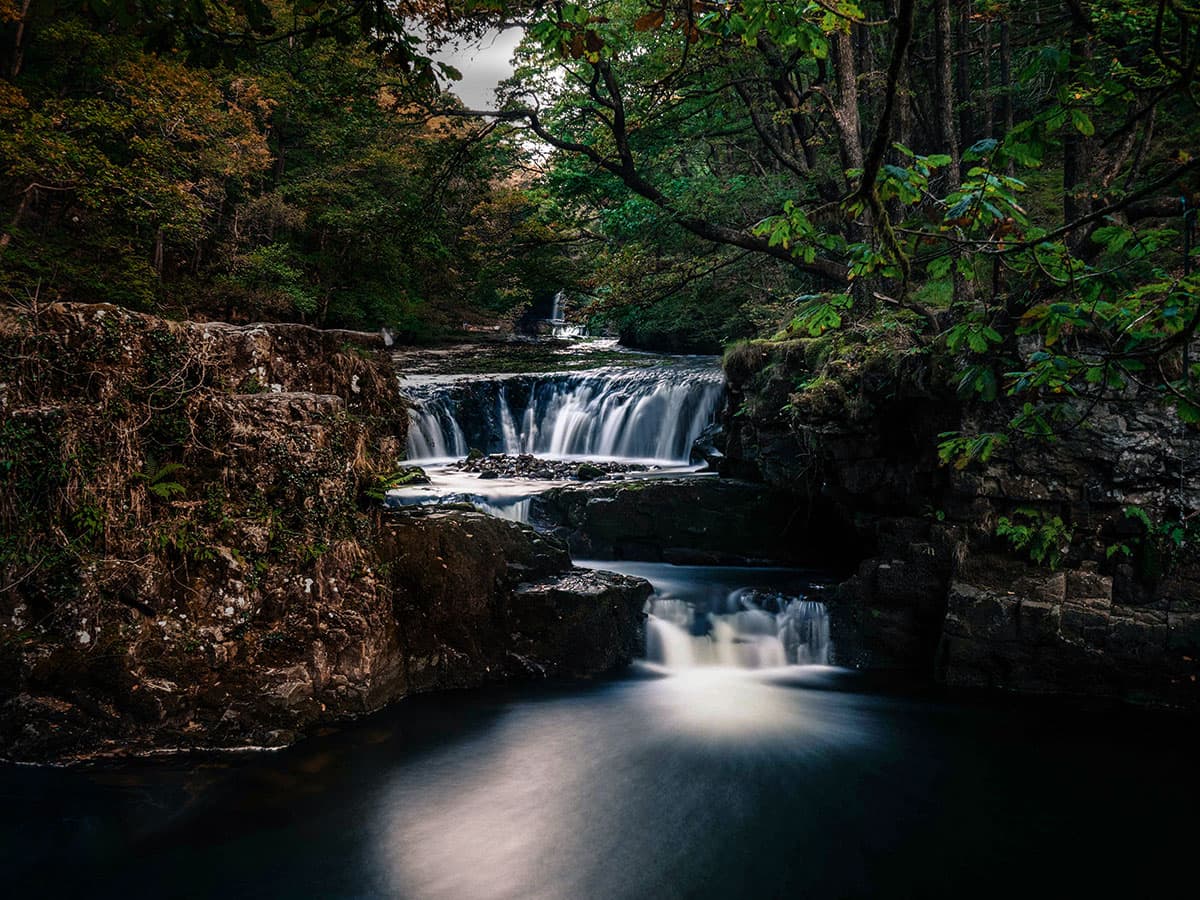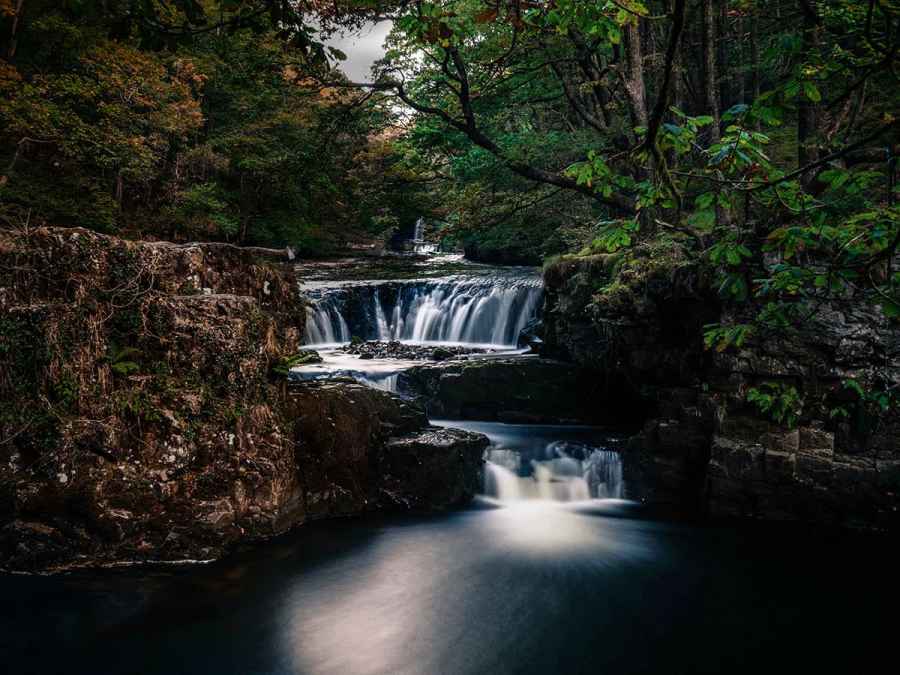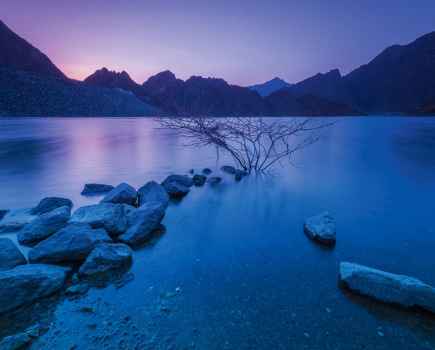Photo: Waterfall
Taken by: Paul Hayday
Olympus OM-D E-M5 Mark II, 9-18mm, 1/30sec at f/13.0, ISO 800

Before: The cliff face on the left is catching more light, detracting from the waterfall in the centre of the frame
Waterfalls are wonderful and I’m always jealous of people who live near them. The sound of water tumbling over rocks is very soothing. I live in Essex and, as far as I know, we don’t have any at all.
Paul sent in a collection of pictures of waterfalls that he took in the Brecon Beacons recently on his new Olympus OM-D E-M5 Mark II. He has made a great job of them, and has managed to show flowing water without it being over the top and distracting.
I’ve picked this shot to write about as it demonstrates a problem that’s common when shooting waterfalls and rivers that pass through wooded areas. The river carves a path through the trees and creates an opening for the sky which, if we aren’t concentrating, can create contrast that’s too high for our camera to manage.
Here, the right-hand side of the frame and the water are in the shade, while the left side is in much brighter light. The cliff face on the left catches far more light than the rest of the areas of the image, so my brain immediately tells me it is the most important part of the picture – because it has a spotlight on it. The cleverer part of my brain knows the waterfall is the main interest, but the clever side and the instinctive side argue, which distracts me from what I’m supposed to be looking at.

After: A neutral density graduated filter would have helped to balance out the exposure
A solution might have been to use a neutral density graduated filter, on its side, so that the darker part covered the lighter area of the frame to balance out the exposure. I can’t do that in retrospect, so I’ve just darkened the left side to simulate what the picture might have looked like. Software can only do so much, so the coloration is wrong in the adjustment, but it would have looked much more natural with a good filter.
I know there is not much we can do about intrusive objects in the frame, but there is no getting around the fact that a massive length of cut wood protruding across the central interest is going to ruin the shot. Sometimes you have to find a different angle, or just accept that a perfect picture isn’t there for the taking.







